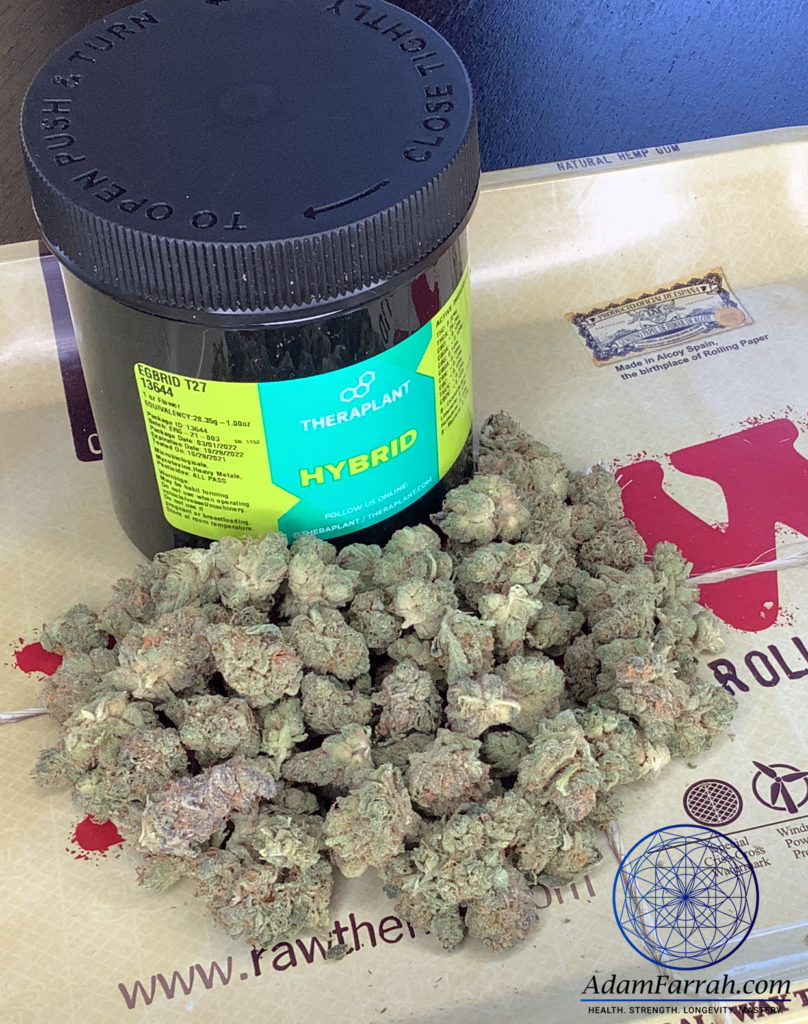
This in-depth post discusses how I’ve used medical marijuana for ulcerative colitis since 2014 as a cornerstone in my natural healing program.
My personal results using medical marijuana for ulcerative colitis have been outstanding.
Marijuana is an exceptional anti-inflammatory for ulcerative colitis when used consistently and with discipline over the long term.
It is about emerging science that not only shows and proves what marijuana can do for the body but provides better insights into the mechanisms of marijuana in the brain, helping us better understand a plant whose benefits have been documented for thousands of years. This journey is also about a Draconian system where politics overrides science and patients are caught in the middle.”
Dr. Sanjay Gupta, Neurologist and CNN Chief Medical Correspondent
Medical marijuana isn’t everything needed to manage and heal ulcerative colitis, but it’s been a huge factor in my own healing over many years now.
This guide will give you everything you need to make informed and intelligent decisions about using medical marijuana to manage, treat and heal ulcerative colitis.
Table of contents
- Medical Marijuana as Alternative Medicine for Ulcerative Colitis
- Medical Marijuana as Part of a Whole-Life Healing Program for Ulcerative Colitis
- Why Marijuana and Why Now?
- Marijuana Products and Preparations for Medicating Ulcerative Colitis Effectively
- Medical Marijuana Edible Food Products for Ulcerative Colitis
- Medical Marijuana Dosage for Ulcerative Colitis
- Medical Marijuana Cost when Administering Over the Long Term for Ulcerative Colitis
- Consistent Use – It’s a Marathon, Not a Sprint
- Conclusion
Medical Marijuana as Alternative Medicine for Ulcerative Colitis
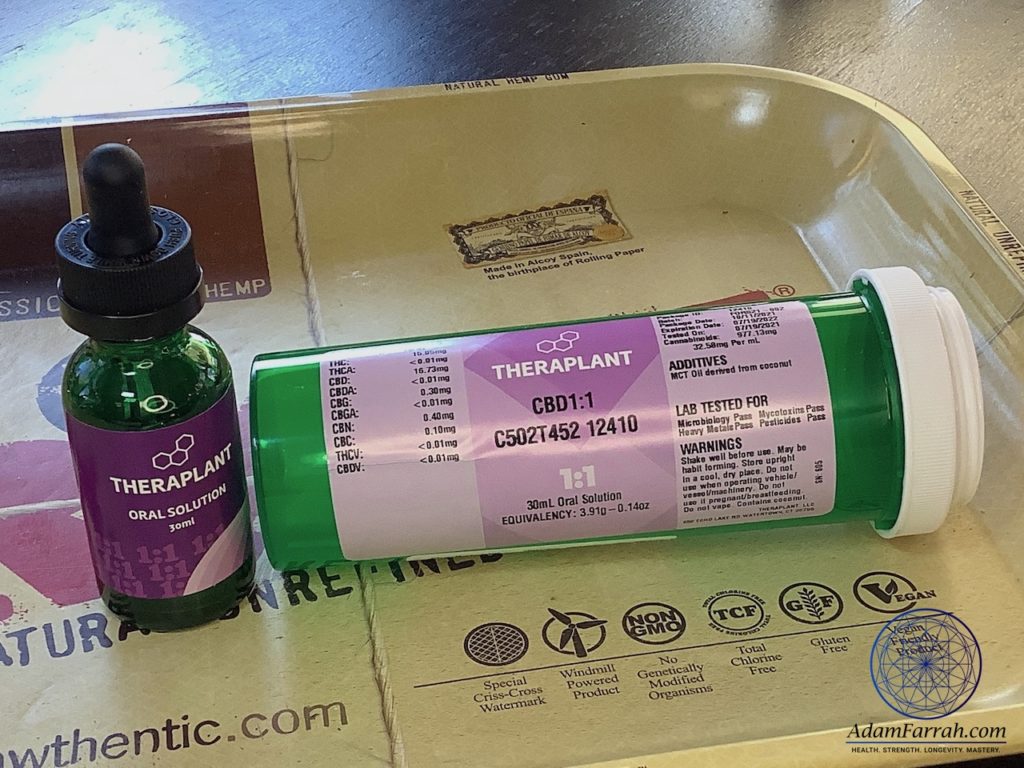
I was diagnosed with severe ulcerative colitis in 2004.
In those early days, there were times I was having bloody diarrhea 20-30 times a day.
It was about as bad as it could have been without killing me back then. It was a true Miracle that I didn’t lose my colon. It was that bad.
As I (re)write this in early 2022, I’m (still) quite healthy.
I consistently have no UC symptoms and use no medication other than medical marijuana for ulcerative colitis. (I use no prescriptions for anything. )
Consistent use of medical marijuana for ulcerative colitis over the past seven years has been transformative for my health on every level – physical, digestive, mental, emotional and spiritual.
(It’s not only marijuana. Ulcerative colitis is a multi-faceted, whole-life disease. You can learn all the foundational diet and other core UC healing strategies in my blog posts Healing Ulcerative Colitis with Diet – The Principal Guide and Healing Ulcerative Colitis with Conscious Lifestyle Changes and Practices.)
Medical Marijuana as Long-Term Anti-Inflammatory for Ulcerative Colitis
Marijuana is a powerful medicine and an exceptional anti-inflammatory.
I‘ve successfully avoided needing either long-term prednisone or a biologic like Humira or Entyvio for ulcerative colitis.
My last course of prednisone was in 2009 and I’ve never used any biologic.
I’ve also successfully avoided surgery for ulcerative colitis.
I have all my parts and pieces still intact. My colon and all my intestinal tract are still where they should be.
Though I was doing well with a Paleo-AIP diet and lifestyle changes alone [LINKS], medical marijuana took my healing to a whole other level.
After seven-plus years on consistent medical marijuana for ulcerative colitis, I can confidently say that it’s a transformative and profoundly effective medicine for UC.
Medical Marijuana for Autoimmune Disease Podcast Episode
If podcasts are your thing, you’ll learn a lot from this podcast appearance I did on Eileen Laird’s Phoenix Helix podcast [https://www.phoenixhelix.com/episode-33-medical-marijuana-and-autoimmune-disease/]. On the podcast I discuss my own ulcerative colitis journey as well as my early results with medical marijuana.
There are three other guests and a lot to learn about medical marijuana for ulcerative colitis and for autoimmune disease in general in this episode.
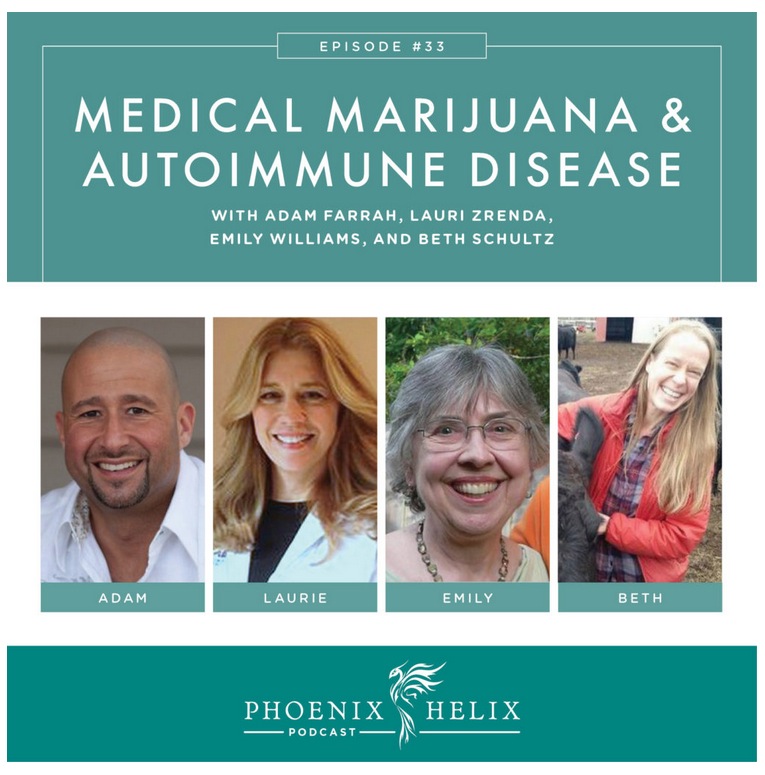
You can access the podcast here: https://www.phoenixhelix.com/episode-33-medical-marijuana-and-autoimmune-disease/
Medical Marijuana as Part of a Whole-Life Healing Program for Ulcerative Colitis
There are practices that have significant benefits and huge value within a healing program for ulcerative colitis.
Medical Marijuana is one such pivotal component.
When I think about healing ulcerative colitis, I think in terms of three meta-categories:
- Food
- Lifestyle
- Medical Marijuana
Intense focus and refinement in each of these three major areas is required to heal effectively.
There’s a lot to each of these topics – each is infinitely nuanced and has many tangential, niche areas of specialty within.
Making holistic healing a daily practice and an area of lifelong study is the only path to healing a chronic, severe autoimmune illness like ulcerative colitis.
If you haven’t already, I strongly suggest you read my blog post Healing Ulcerative Colitis with Diet – The Principal Guide. This epic post will give you a foundational understanding of what it takes to heal ulcerative colitis naturally with a Paleo-AIP diet.
Without a proper and individualized Paleo-AIP diet, medical marijuana will do very little for ulcerative colitis other than be a temporary comfort during flare-ups and severe illness.
(Incidentally, this is how the majority of people use medical marijuana for ulcerative colitis. Particularly the people who haven’t adopted a strict Paleo-AIP diet for UC and other lifestyle practices.
Why Marijuana and Why Now?

“Cannabis has been a friend of humankind since before the written word”
– Martin Lee, Project CBD Director and Cofounder
Marijuana is an ancient plant that’s been used as medicine by cultures worldwide for centuries.
Cannabis cultivation dates back at least 3000 years in Taiwan.[2]
Rapidly expanding medical and recreational legalization of marijuana means there’s never been a better time to investigate this incredible plant – medical marijuana – and incorporate it into your own ulcerative colitis healing plan.
As I wrote in Paleo Magazine back in 2015, a natural plant that’s been used for healing by ancient cultures for centuries is a perfect fit for a lifestyle that’s more in line with evolution as well as our personal pursuits in holistic health and natural healing.
An Ancient Plant for Modern-Day Healing Needs
If you’re not familiar with marijuana (or cannabis) as a safe and effective medicine, you’ll learn a lot and likely change your entire concept of marijuana with the following documentaries.
Marijuana is serious medicine and serious business now.
It’s gained legitimacy and social acceptance in many areas of the U.S. and the world.
That will only increase as more and more people, from all walks of life become aware of marijuana as an alternative medicine.
The CNN Weed Series with Dr. Sanja Gupta
In 2013, Dr. Sanjay Gupta produced and hosted a documentary for CNN about medical marijuana and legalization.
Dr. Gupta is CNN’s Chief Medical Correspondent and, according to Dr. Gupta himself, he was initially biased against marijuana as a medicine.
What began as a single documentary with a negatively-biased host ended up becoming a six-documentary series that is overwhelmingly favorable toward medical marijuana.
Here’s Weed 1:
I gained a lot of respect for Dr. Gupta when, in August of 2013, he took a very progressive and favorable attitude toward marijuana in spite of a lot of political backlash [https://www.cnn.com/2013/08/08/health/gupta-changed-mind-marijuana/index.html].
At the time, nearly a decade ago, there was a lot less acceptance of medical marijuana in the medical establishment than even today.
Here’s what Dr. Gupta said in an article on CNN.com:
“It is about emerging science that not only shows and proves what marijuana can do for the body but provides better insights into the mechanisms of marijuana in the brain, helping us better understand a plant whose benefits have been documented for thousands of years.
“This journey is also about a Draconian system where politics overrides science and patients are caught in the middle.”
He goes on to say:
“More remarkable, many doctors and scientists, worried about being ostracized for even discussing the potential of marijuana, called me confidentially to share their own stories of the drug and the benefit it has provided to their patients. I will honor my promise not to name them, but I hope this next documentary will enable a more open discussion and advance science in the process.”
(Quotes taken from: http://www.cnn.com/2014/03/05/health/gupta-medical-marijuana/)
Scientific Studies Using Medical Marijuana as Anti-Inflammatory for Ulcerative Colitis
As medical and recreational legalization of marijuana expands, more and more research gets done on cannabis as a medicine.
The following study had some good results in treating Crohn’s disease with medical marijuana for 8 weeks.
Cannabis Induces a Clinical Response in Patients With Crohn’s Disease: A Prospective Placebo-Controlled Study
You can access the study here: Cannabis Induces a Clinical Response in Patients With Crohn’s Disease: A Prospective Placebo-Controlled Study [https://www.cghjournal.org/article/S1542-3565(13)00604-6/fulltext]
Study Summary and Comments
Four patients in the placebo group (but none in the cannabis group) deteriorated and needed rescue intervention during the study period.
Three steroid-dependent patients in the cannabis group stopped steroids during the study. Thus, at the end of the study no patient in the cannabis group required steroids.
Two patients in the study group, who were treated with opiates owing to severe chronic abdominal pain, stopped opiates during the study.
Though the authors describe in detail the marijuana cigarettes’ THC content, they failed to mention how many times a day the study participants were smoking them.
I assume it was just once per day.
In my experience, higher dosages of medical marijuana produce better results with ulcerative colitis. More commentary on frequency of administration would have been welcomed.
One important outcome in the study was:
“Three steroid-dependent patients in the cannabis group stopped steroids during the study. Thus, at the end of the study no patient in the cannabis group required steroids.”
Another notable study outcome was:
“Two patients in the study group, who were treated with opiates owing to severe chronic abdominal pain, stopped opiates during the study.”
A noteworthy point the authors make is:
“Although the long-term side effects of cannabis are not negligible, other treatments for Crohn’s disease, such as steroids, purine analogs, or anti–TNF-α, also carry the risk of significant side effects, some even life-threatening.
“The potential benefits should not be ignored only because of concern for possible side effects. Taking into account that Crohn’s disease is a chronic debilitating disease that sometimes severely may compromise patients’ quality of life, the ability to provide symptomatic relief judicially, in carefully selected patients, should not be overlooked.”
I appreciate that the authors acknowledge the significant side effects of drugs like corticosteroids and biologics (anti–TNF-α).
The safety and low side-effects of medical marijuana are a huge advantage as an alternative treatment for ulcerative colitis.
The above study could be repeated with the following improvements:
- Use medical marijuana tinctures instead of smoking joints
- Implement a strict Paleo-AIP diet in addition to medical marijuana
- Test different cannabis daily dosages
(That’s a lot of moving parts and probably a bunch of different studies.)
Think about it though, the marijuana showed a clinically significant effect on Crohn’s disease.
That’s an intriguing result.

Endocannabinoid System as a Promising Therapeutic Target in Inflammatory Bowel Disease
This second study gives an important overview of the cannabinoid receptors in the stomach and digestive tract.
It summarizes the role of the endocannabinoid receptors on intestinal inflammation.
You can find the article here: Endocannabinoid System as a Promising Therapeutic Target in Inflammatory Bowel Disease [https://pubmed.ncbi.nlm.nih.gov/35003109/]
The endocannabinoid system is the body’s receptor system that interacts with the cannabinoids in marijuana.
Marijuana has an immediate effect on the intestinal tract because there are so many cannabinoid receptors in that region of the body.
The primary two cannabinoids of interest for medical marijuana users with ulcerative colitis are THC and CBD.
(Want to learn more about THC, CBD and how cannabinoid medicine works in the body? Checkout out my blog post CBD and High-CBD Medical Marijuana – The Principal Guide.
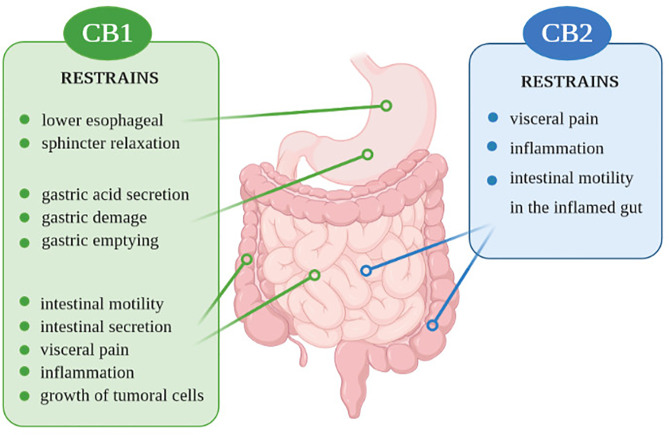
The diagram above from the study shows the various intestinal processes that the CB1 and CB2 receptors are involved in. (Image Copyright: Copyright © 2021 Hryhorowicz, Kaczmarek-Ryś, Zielińska, Scott, Slomski and Plawski)
These are the receptors that THC and CBD target.
The THC and CBD in medical marijuana target the specific receptors and processes we’re concerned about in ulcerative colitis.
I predict in the coming years we will see a dramatic increase in interest in the cannabinoids and the cannabinoid receptors, CB1 and CB2, as therapeutic targets for IBD. That research is in its infancy right now.
Marijuana Products and Preparations for Medicating Ulcerative Colitis Effectively
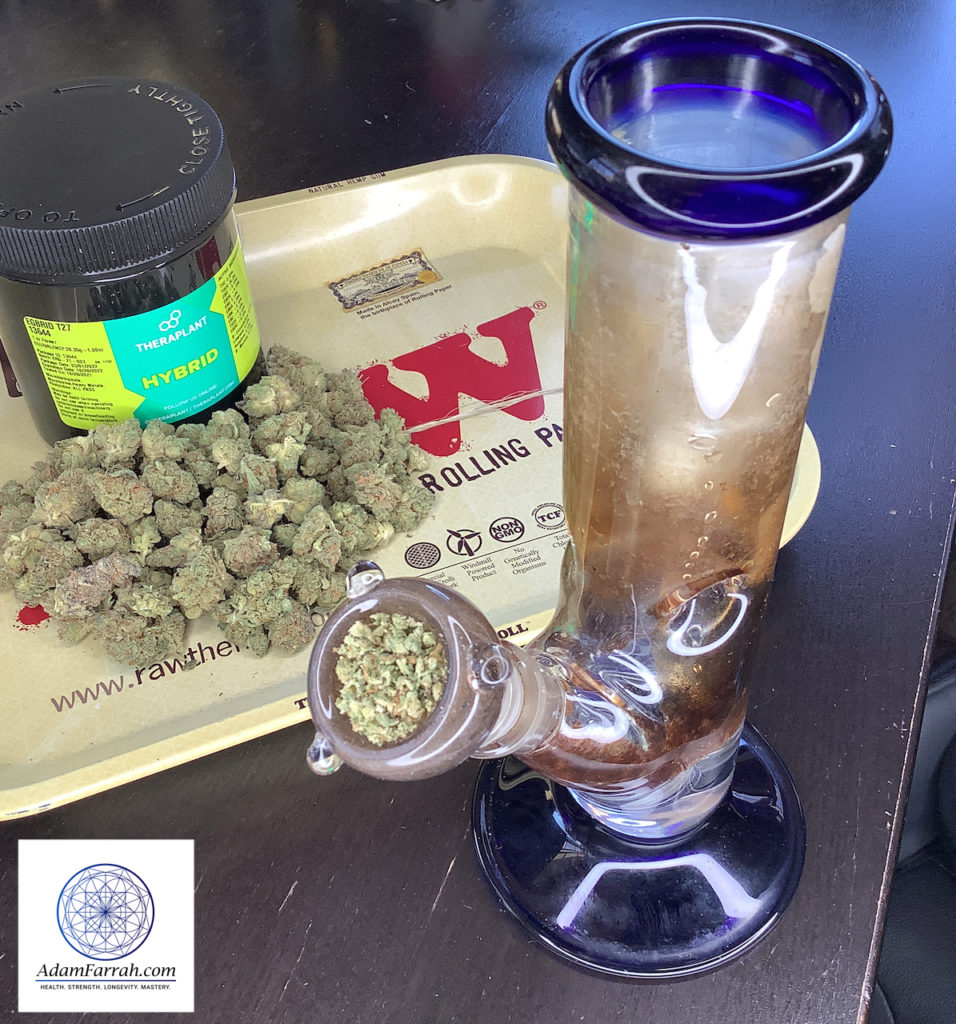
When most people think about using marijuana, they think about smoking a joint.
While smoking marijuana is a cheap, easy way to medicate, it’s not the only option.
Smoking can be enjoyable to some, myself included, but long-term use will dictate other modes of administration sooner or later.
We need to have at least one option for medicating that doesn’t involve smoking.
In recent months, I’ve begun seriously using and investigating medical marijuana tinctures for ulcerative colitis.
I discuss tinctures below as well as in the deep-dive post Medical Marijuana Oil Tinctures for Ulcerative Colitis.
There are several options for administering and dosing medical marijuana, though not all of them are the best for ulcerative colitis.
Smoking and Vaping Medical Marijuana
Smoking and vaping are the fastest and most effective ways to get marijuana into the system.
Smoking and vaping have their own unique advantages and drawbacks.
Smoking involves using whole marijuana flower and, sometimes, certain concentrates.
Vaping is generally done with concentrates and sometimes ground marijuana flower.
Vaping generally requires more paraphernalia, cost and user skill.
The majority of my experience is with whole marijuana flower smoked in a water pipe or “bong.”
There are a number of advantages to using whole marijuana flower that I’ve come to appreciate.
- Whole marijuana flower is always the best value in terms of milligrams of THC per dollar
- Whole marijuana flower requires little skill or special equipment to use effectively
- Whole marijuana flower is unprocessed and natural
My (Limited) Experience with Vaping Medical Marijuana Concentrates for Ulcerative Colitis
I’ve experimented with concentrates considerably. I spent a decent part of 2018 trying to get “dabbing” to work for me with the various shatter, crumble and rosin available at my dispensary.
I used both a dab rig with a quartz banger and torch as well as a Dr. Dabber Aurora pen.
Ultimately, my stress level went up and my medicine costs increased exponentially.
I spent money replacing broken quartz and glass parts and messing with dab pen batteries and coils that burned out – sometimes after just a use or two.
The idea of a marijuana vape pen is attractive, but concentrate cost and mechanical unreliability made it stressful, unpleasant and tiring to use.
I solved my need for portability and smokeless, easy medicating with medical marijuana tinctures, as described below.
Medical Marijuana Tinctures for Ulcerative Colitis
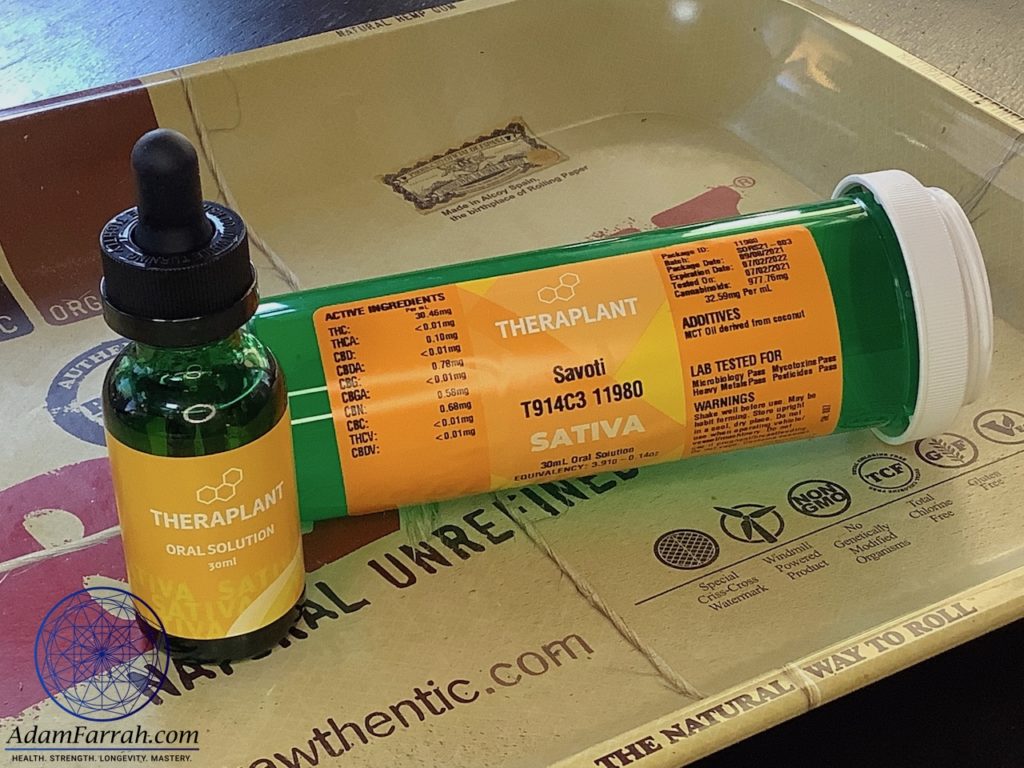
Tinctures and capsules offer good smokeless options for UC and I’ve recently become a fan of medical marijuana tinctures, particularly for ulcerative colitis.
Based on a few conversations with my marijuana doctor as well as my own experimentation with tinctures, there seems to be something to the oral/direct administration of the tincture relative to UC.
The THC and terpenes in the medical marijuana tinctures seem to really heal and strengthen the digestive tract when delivered orally a few times a day for ulcerative colitis.
I’m convinced that there is something to the direct delivery route to the digestive/oral tissue with marijuana tinctures relative to UC.
Since starting to use tinctures daily to replace some of my smoked marijuana flower, my stool quality has also improved dramatically from what was already an excellent state.
Marijuana tinctures have recently become a cost-effective, smokeless and portable staple in my medical marijuana healing program for ulcerative colitis.
You can learn all about how I’m using medical marijuana tinctures for UC in the blog post Medical Marijuana Tinctures for Ulcerative Colitis.
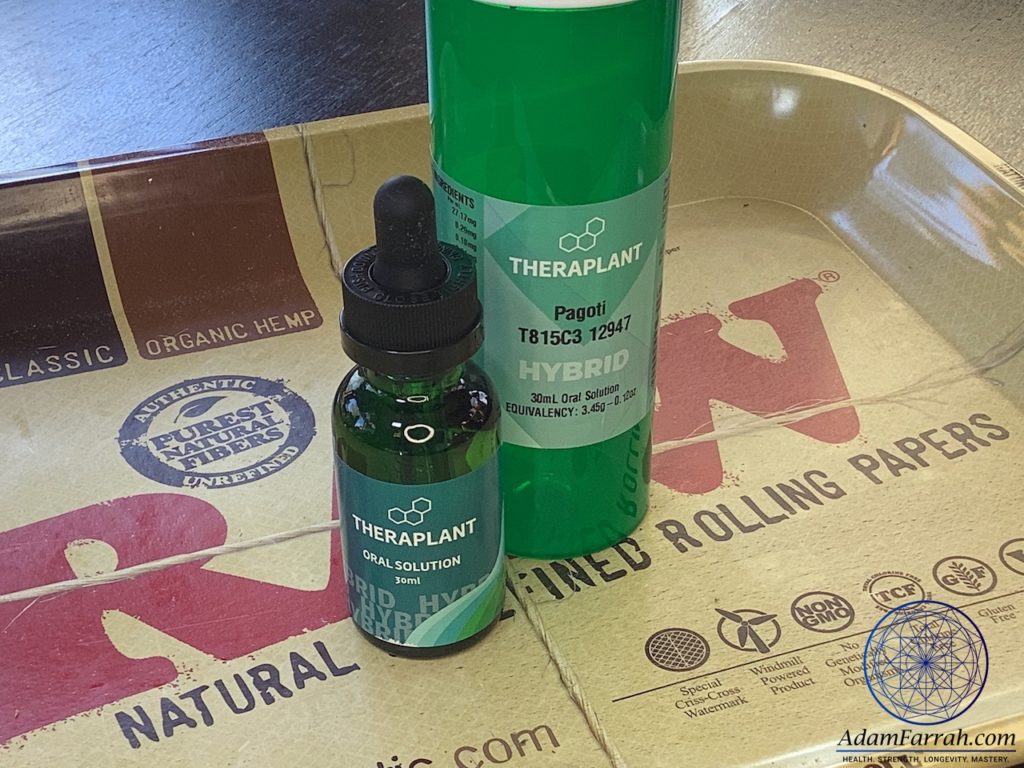
Medical Marijuana Edible Food Products for Ulcerative Colitis

Finally, there are medical marijuana edibles or “medibles.”
The edible medical marijuana products can be good or bad for ulcerative colitis, depending on the food that’s been medicated.
For ulcerative colitis I suggest only Paleo-AIP-friendly medical marijuana edibles like medicated coconut oil or honey.
Most edible medical marijuana products are made with food that will trigger a flare-up in someone with ulcerative colitis.
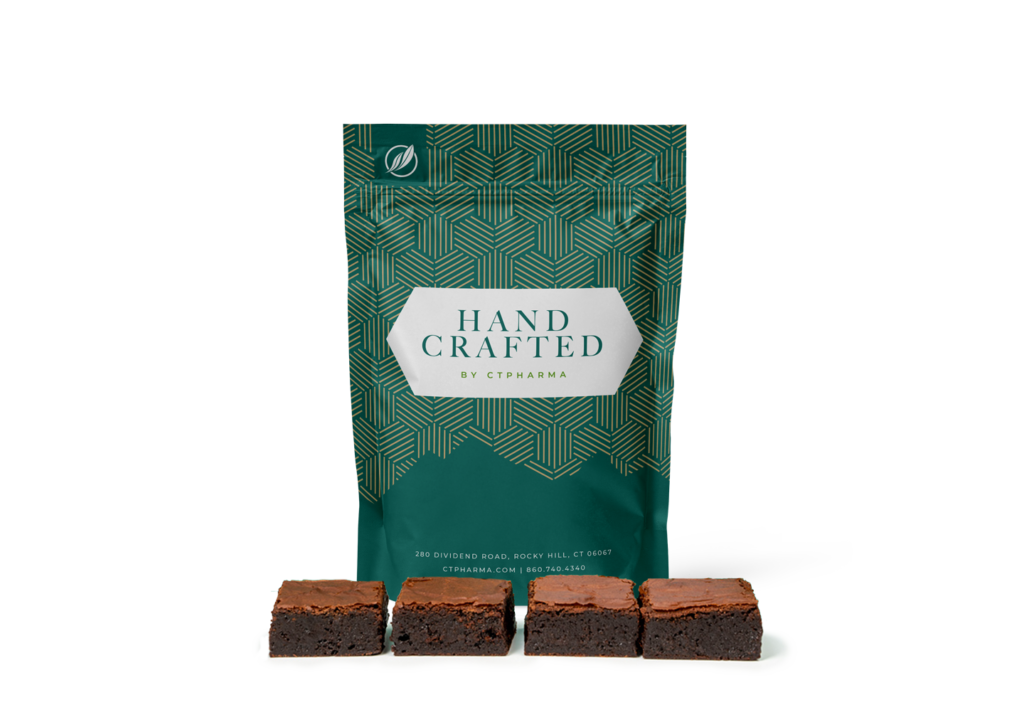
Beyond the obvious cost premium with edible marijuana products or “medibles,” there’s also the inclusion of questionable ingredients for people with ulcerative colitis and Crohn’s disease.
Many of the ingredients in the Connecticut Pharmaceutical medical marijuana brownies above are a no-go for anyone with ulcerative colitis.
They will be at least as triggering for someone with UC as they are healing or anti-inflammatory.
They’ll probably be detrimental overall.
Gluten and sugar and eggs are just a nightmare for anyone with UC.
This isn’t anything against the product itself.
There are plenty of people who benefit from and enjoy these types of products.
They just aren’t the right fit for anyone with ulcerative colitis or Crohn’s disease.
Don’t know what to eat and what to avoid with UC? Check out my foundational blog post Healing Ulcerative Colitis with Diet – The Principal Guide. You can also get specific with foods and meal examples in Eating for Ulcerative Colitis – with My Personal Meal Examples.
Avoid Most Edibles if You Have Inflammatory Bowel Disease
Certainly, you can try some Paleo-friendly medibles like cannabis-infused coconut oil or honey, but definitely monitor your results closely.
With ulcerative colitis and the additional health problems it can set us up for, virtually anything can throw us off.
Just the sugar in a cannabis-infused honey can be enough to create problems for some.
Be careful.
For ulcerative colitis and Crohn’s disease patients, I suggest totally avoiding any cannabis-medicated food product that contains sugar (possibly even naturally occurring), gluten, chocolate or nuts.
I’ll go on to include any product made with any grain or nut flour – gluten-free or otherwise.
These will be at least as damaging to the gut lining and stimulating to the immune system as the marijuana is healing.
The Cost of Marijuana Edibles is Too High
Edible products have the additional price premium from preparing the marijuana for cooking as well as the labor to make the food product the medication goes in.
And don’t forget you’re paying for the “food” the medicine is in too.
The consumer ends up paying 2-6 times as much per gram of THC with medibles and possibly getting inflammatory and negative food ingredients that impact healing UC on top of it.
Most medical marijuana medicated foods are a definite no-go for inflammatory bowel diseases like ulcerative colitis or Crohn’s Disease.
Medical Marijuana Dosage for Ulcerative Colitis
I’ve found that the more marijuana I use in a particular day, the better my elimination is the next day.
I haven’t seen diminishing returns relative to dosage and bowel health – at least not at the dosages I’ve used so far.
When it comes to medical marijuana for ulcerative colitis, my finding over the past few years is that more THC is better than less.
If You Have Existing Problems with Anxiety
If you have significant problems with anxiety, this high-dose approach may not be the best option for you. At least not until you’ve developed some tolerance for THC and some experience with lower-THC strains and dosages.
Proceed slowly and carefully if you have an anxiety disorder.
Marijuana is great medicine for anxiety, but the immediate effects of a lot of THC can be very overwhelming to a novice user not experienced with the cognitive and perceptual anomalies the THC produces.
I’ve also found that the more yoga and meditation I do and the more spiritual healing I do, the less I get anxious when using marijuana and the more likely I am to have a transcendent or emotionally healing experience when using it.
The Psychoactive Effects Diminish Over Time
The great thing about marijuana is that its positive health effects seem to really compound over time, while the intoxicating or psychoactive effects diminish.
Tolerance is developed over time.
The majority of the negative psychoactive experiences novices can have with medical marijuana can be avoided by dosing conservatively and using consistently enough that some tolerance and experience dealing with the effects of the THC are developed.
You can also experiment with using high-CBD medical marijuana. CBD tends to calm anxiety and can diminish the anxiety and intensity of the THC. I’ve experimented with using a 1:1 CBD/THC marijuana tincture that I really like from Theraplant.
Medical Marijuana Cost when Administering Over the Long Term for Ulcerative Colitis
Daily long-term cannabis use can get expensive.
Once the decision is made to give medical marijuana for ulcerative colitis a real try, cost per day and cost per dose will be something that needs to be looked into.
The following table was compiled from online Connecticut dispensary menu data in December of 2021.
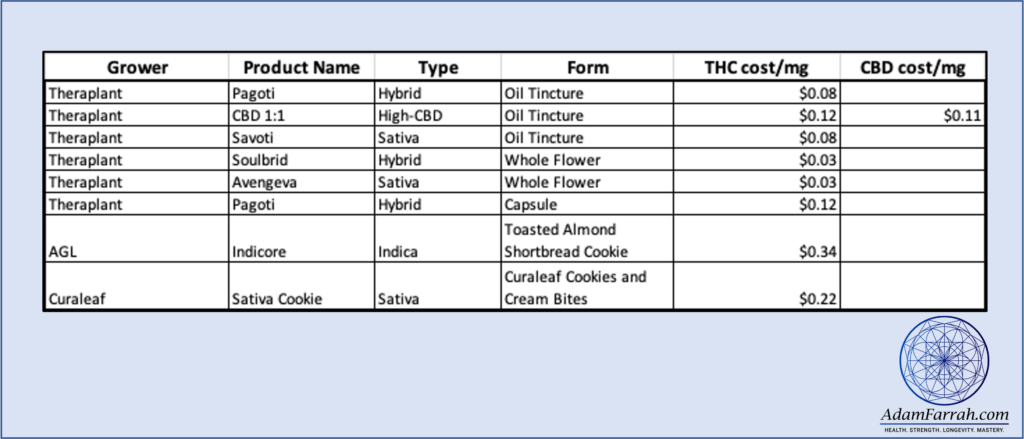
Above is a table of various medical marijuana products from my dispensary. There are the three medical marijuana oil tinctures that are the main topic of this post. There are also several Theraplant flower strains as well as a Theraplant 50mg capsule product and two medicated edible cookie products.
As I’ve said previously, marijuana flower is the most cost-effective way to use marijuana for ulcerative colitis. The price per mg of THC is always lowest with whole marijuana flower.
In this case, the cost per unit THC with smoked marijuana flower is about $0.03/THC mg.
The second lowest cost per unit THC are the medical marijuana tinctures at about $0.08/THC mg for the sativa and hybrid.
The high-CBD medical marijuana oil tincture comes in with a cost per unit of CBD at $0.11/CBD mg and THC at $0.12/THC mg.
Price per unit of THC for the capsules are $0.12/THC mg and the edible products come in really high at $0.22/THC mg and $0.34/THC mg.
Consistent Use – It’s a Marathon, Not a Sprint
Having been in the Connecticut Medical Marijuana Program since its inception in 2014, I’ve had seven years to see results and experience the effects of long-term, consistent usage of high-quality medical marijuana for ulcerative colitis.
If any one aspect of my medical cannabis usage has been instrumental in my healing, I’d say it’s the regular and sometimes heavy daily usage of the plant.
Day to day, there really wasn’t a lot of perceptible difference in my health other than a better mental state and better sleep.
I believe it’s been the long-term usage of this strongly anti-inflammatory substance – medical marijuana – that created some major ulcerative colitis healing results and benefits over time.
Putting Consistency into Practice
Here are some bullets to get you started with a consistent medical marijuana practice for healing ulcerative colitis.
Take Lots of Notes
Notes and records are important. Good note-taking and record-keeping is a skill and a habit.
Get started now and develop your preferred way of tracking everything health and healing related.
I’ve kept notes in a regular paper notebook as well as in my phone in various apps.
I’m a big fan of journals and penned, hand-written entries.
I currently use an Excel spreadsheet to keep track of products, growers and results.
Develop a List of Preferred Strains and Growers
Marijuana is a natural product. It takes time to grow and the final product isn’t always 100% controllable and repeatable.
Also, a strain from one grower will be slightly different – or very different – from the same strain grown by a different grower.
Keeping records of strains used, growers, how you feel on them and anything else that comes to mind can pay off big over time as you develop a list of favorite strains, products and growers.
As I said in my post The 10 Myths About Using Medical Marijuana to Treat Ulcerative Colitis, chasing specific strains isn’t always possible – or even worth it sometimes.
Use a scale to weigh for consistency
I weigh all my portions of flower after grinding and before smoking.
Weighing allows me to monitor and control my medicine dosage and costs quite closely and easily.
Use daily
For devastating diseases like ulcerative colitis and Crohn’s disease, daily use of medical marijuana is mandatory.
It’s the best way to build up THC and other cannabis medicinal compounds in your system and get the long-term effects of the plant.
I believe this high, consistent concentration of medical marijuana metabolites in the system is one of the fundamentals in healing ulcerative colitis naturally with cannabis.
Refinement of Medical Marijuana Use for Ulcerative Colitis Over Time
This one fits right in with “Consistent Use,” above. It takes a long time to refine and perfect your medical marijuana use for ulcerative colitis.
It took me years of daily work, reading, experimentation and study.
Over time, my use has become very efficient, economical (relatively speaking) and quite repeatable and consistent.
Conclusion
I’ve found no supplement or medication that can even approach the effectiveness of medical marijuana for healing inflammation, healing ulcerative colitis and dealing with the myriad ancillary problems that come along with UC.
In 18 long years of work and study and struggle to heal my own ulcerative colitis naturally, nothing’s even come close to the benefits of medical marijuana for me.
I think about all the money that was (Literally!) flushed down the toilet with supplements from naturopaths, coaches and healers and all the crazy foods that made me worse.
That $20 of medical marijuana per day can do more than all the over-hyped and over-priced supplements, foods and treatments for ulcerative colitis combined is something to really consider.
The three core practices that changed my life and brought me to the point that ulcerative colitis isn’t a part of my daily existence anymore are:
- An individualized and strict Paleo-AIP diet
- Daily medical marijuana
- Daily yoga and meditation
Healing from any chronic illness requires a complete reorganization of our entire lives.
It’s much more complicated than taking any single medication or supplement or alternative treatment.
Healing inflammatory bowel disease is much more complicated than just following a diet or smoking a joint at the end of the day.
Healing a chronic illness like ulcerative colitis requires a tremendous amount of work and dedication. It also requires going against the grain, making our own decisions, thinking for ourselves and taking some risks.
Thankfully, the trends toward legalization of medical marijuana as well as its popularity for serious autoimmune diseases like ulcerative colitis continue to grow.
In the near future, I hope that medical marijuana will be looked at more and more seriously as both a powerful medicine for ulcerative colitis as well as a viable option for more and more IBD patients.
Was this post helpful? Have you had your own experience with medical marijuana for ulcerative colitis? Do you have additional questions about medical marijuana for ulcerative colitis that I didn’t address here? Leave a comment below!
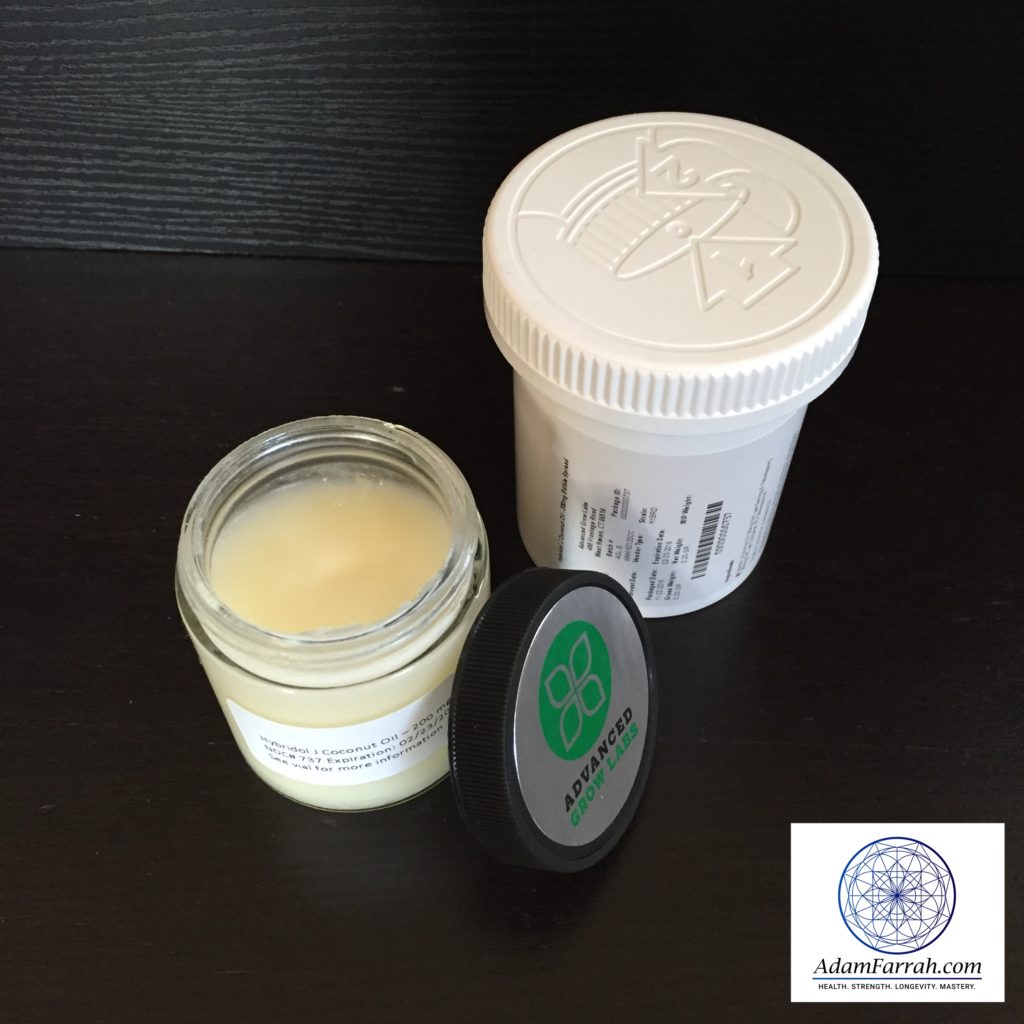
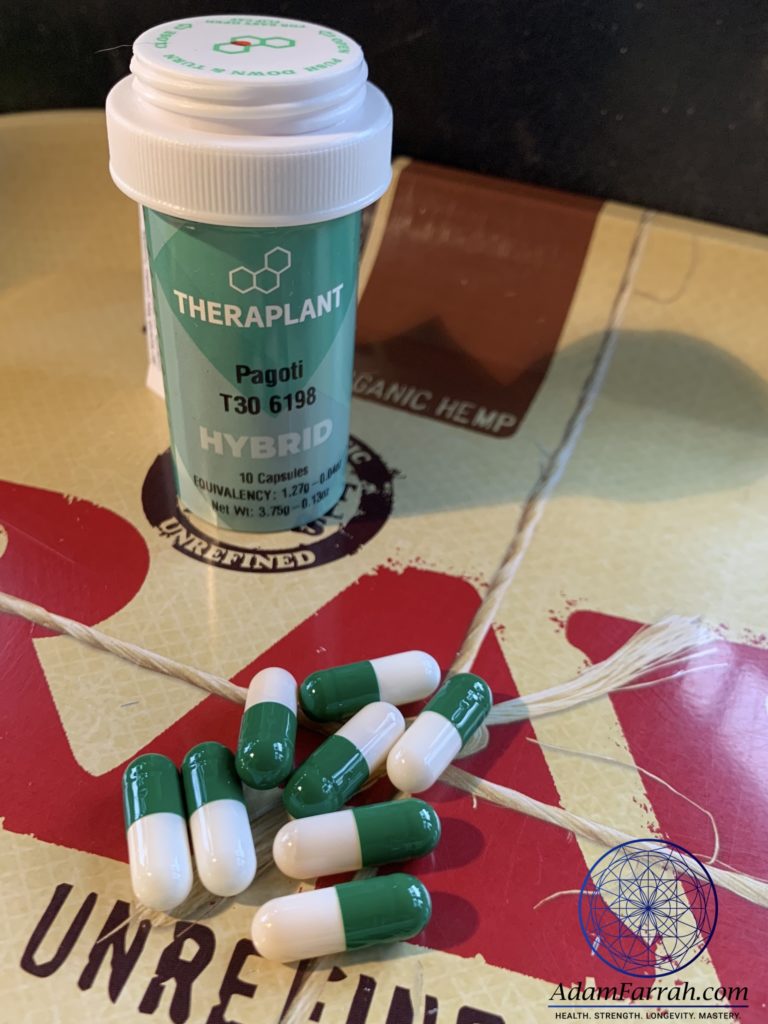
Thank you for taking the time to write a very informative article! Very rare to find! I’ve been experimenting with cannabis for a few weeks and haven’t seen promising results..almost seems worse at times..but I’m restructuring my diet and also trying to find the right dosage. It is work, but reading this has given me hope. Thank you.
Jordan
Thanks for letting me know, Jordan! I’m happy to hear it was helpful for you and that it wasn’t like everything else you’ve read online. I’m going to be writing more of this type of content in the future.
Good luck, Jordan, and definitely keep in touch.
Adam
Hey
How are you I hope all is well. I’m a great admirer of your work and I wanted to ask for your advice regarding my case of UC .In your opinion does the intake of full extract of cannabis oil interact negatively and oppose conventional treatment (budenoside)? And if so is there way to avoid this interaction of drugs? My doctor might prescribe biologics for me and if so does the oil also interact with biologics? What do you advise I should do taking into consideration the fact that the oil is illegal in my region so it takes time to obtain?
I sincerely thank you and wish you the best 🥰
Hey Shadia,
I can’t be certain, but I don’t know of any likely interactions between budenoside (a corticosteroid) or a biologic and a marijuana or THC oil. They are all anti-inflammatories in one form or another.
Cannabis oil should reduce your need for other medications. In my personal case, I use NO medications other than cannabis. Diet and lifestyle alone allowed me to end my own prednisone (a corticosteroid) use in 2009. Even then, I only used it sporadically. I started medical marijuana in 2014 when it was made legal in Connecticut. That was a BIG piece of my healing puzzle. I’ve never used or even considered a biologic.
Incidentally, I just saw my marijuana doctor last week for my yearly renewal. He told me about someone he saw recently with UC who had been on Humira. He ended up with a serious cancer and lost part of his lower jaw. I suggest taking a very good luck at the side-effects and safety data for Humira and similar. Don’t just take your doctor’s word. They have some pretty significant side-effects and risks. Do your homework.
If you can try the oil before the biologics, you might be able to avoid them entirely. Depending on how much cannabis oil you use and how consistently, etc. I’d say 50-100mg THC is a good starting point. I have no idea how you’ll react to this so start very low and slow if you’re not an experienced cannabis user. The anxiety and psychoactive effects diminish pretty quickly but they’re intense for a novice.
As far as the legality, a problem you may have is just how often you can get it. I virtually never go without marijuana and I feel that having the THC in my system very consistently at a reasonably high daily dose is what creates the long-term healing and anti-inflammatory effects. My dosage is probably 200-400mg of THC per day. Make sure you have plenty and try not to run out if you can help it.
Good luck and let me know how it goes.
Adam
As a guy that’s having a mental breakdown right now trying to get through just my second time experiencing my UC at 26 this article really made me feel better. Any articles I’ve read since my flare up Sunday have completely tore me down about meds my whole life and possibly surgery for a bag and everything and I’m so happy I found this article to pick me back up a little. Very detailed and well put together. Thank you so much.
Glad it helped you out, Alexander. There are other options to medications and surgery for many people. The path I took isn’t for everyone, but I’m very glad I made the choices I made over the years. And the marijuana has been a complete game-changer!
Adam
Hi Adam
I have just been discharged from hospital here in New Zealand and I am still suffering from a prolonged flare up of UC. I am currently taking Prednisone (40mg) and Pentasa and been given the classic pro drug speech by the gastro specialist which included diet has nothing to do with healing the disease. I have previously done a carnivore diet and that helped ease the inflammation but was just so hard to maintain without veges and fruit. I need to make fundamental lifestyle changes and I am grateful to find your wisdom layed out here for all to see. I am firm believer in the healing powers of cannabis and I have been using this powerful plant for many years. Once finishing this comment I am putting down my laptop and starting my yoga practice again which has dropped away the more I got ill. I would be interested to know when you started your journey with the Paleo-AIP diet. Did you throw all your pharmaceutical drugs out one day and just start fresh or was it a slow integration to the new lifestyle while slowly weaning of the drugs? I am 100% focused on making the necessary changes and would like to know how long it was before you felt free of the anxiety of a flare and were confident the changes you made were working. Look forward to you thoughts. Thanks for taking the time to help create a pathway for healing for all of us out there being held back from a healthy, positive and for filling life.
All the best
Regan
Hi Regan,
The Carnivore Diet won’t do it. I’ve had a few people who were on that and weren’t doing well. It’s too restrictive but doesn’t restrict all the right things at the same time. Weird. I don’t get the reasoning behind it.
I was never on drugs that I needed to wean off of, Regan. I did only short cycles of prednisone and that’s it. Never more than a month or so at a time. The biologics like Humira weren’t out yet and the sulfa drugs like mesalamine or Asocol didn’t work for me. I was facing a lifetime on prednisone and surgeries. That’s a big part of why I took the path I did.
I was in the Paleo thing early. I met Robb Wolf back in 2008. He was coaching me back then. Paleo never totally worked for me. But the AIP modification did. I was noticing ups and downs and finally started seeing that all the things excluded on Paleo-AIP, were the things I was reacting to.
The answer to your question is that, once I went to fully compliant Paleo-AIP I started really healing. You should feel better in a day or few. You’ll notice something right away.
Virtually any deviation from AIP with ulcerative colitis will keep you sick. You have to go 100% for a few months to really see heal. Even 99% can keep you stuck and out of healing fully.
If you’re in a flare up right now and can get marijuana, use as much as you can stand. I’ve never seen “too much” relative to THC and a UC flare up. The more THC you can get into you, the faster you should heal.
Adam